Being able to schedule important messages can sometimes seriously save our necks. Whether you need to schedule important business messages or even personal messages while you’re busy with work, they can be lifesaving. It’s a shame really that there is no such inherent functionality in iPhone.
Some Android users who switch to iPhone even feel cheated of such a basic feature. But, basic or not, the truth of the moment is that you cannot directly schedule text messages on your iPhone. “Directly” – do you see where we’re going with this? You can achieve this feat indirectly.
Use Shortcuts App to Schedule Messages
The shortcuts app can let you do wonders on your iPhone. And the best thing is, you don’t even need to create extensive shortcuts yourselves. The Shortcuts Gallery has some pretty rad shortcuts others have created that you can use.
One such ready-to-use shortcut is the ‘Delayed Time iMessage’ shortcut. This multi-step shortcut lets you schedule messages on your iPhone. And all you have to do is run it, and in a few short taps, you can get back to whatever else you want to do. Even though the name of the shortcut says iMessage, you can schedule SMS too.
Note: There is a very big limitation with this shortcut, though. It can only run when your iPhone is unlocked. When your phone is in the lock state, either the shortcut won’t run at all, or you’d get an error message. So, you can use this shortcut to schedule a message if you’re working on your phone, playing a game, scrolling on Instagram, etc., or know you’d be using it at that time.
Getting the Shortcut
Open this link for the shortcut in your Safari browser or go to shortcutsgallery.com and find the ‘Delayed Time iMessage’ shortcut yourself.
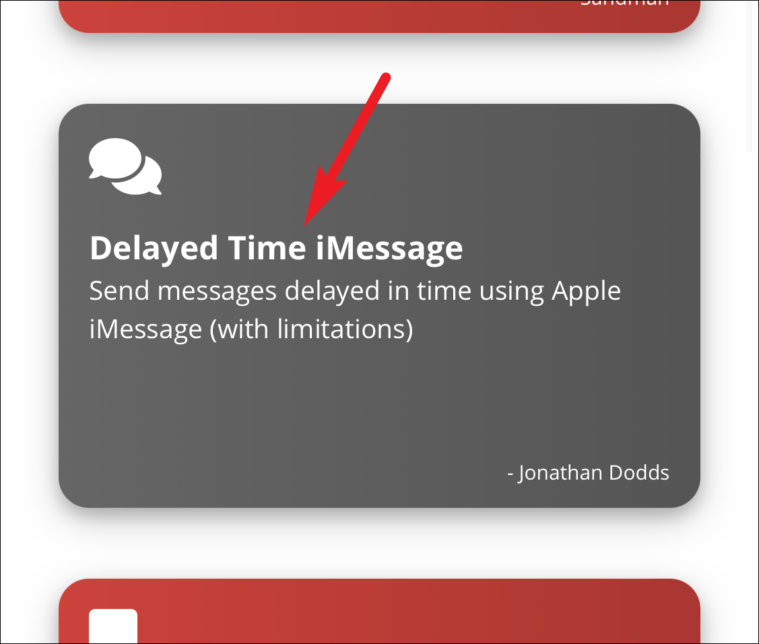
Tap ‘Get Shortcut’ to add the shortcut to your Shortcuts app.

The shortcut will open in the Shortcuts app. Make sure you have the app downloaded on your phone first, though. Tap ‘Add Shortcut’ after reviewing the contents of the shortcut to install it.
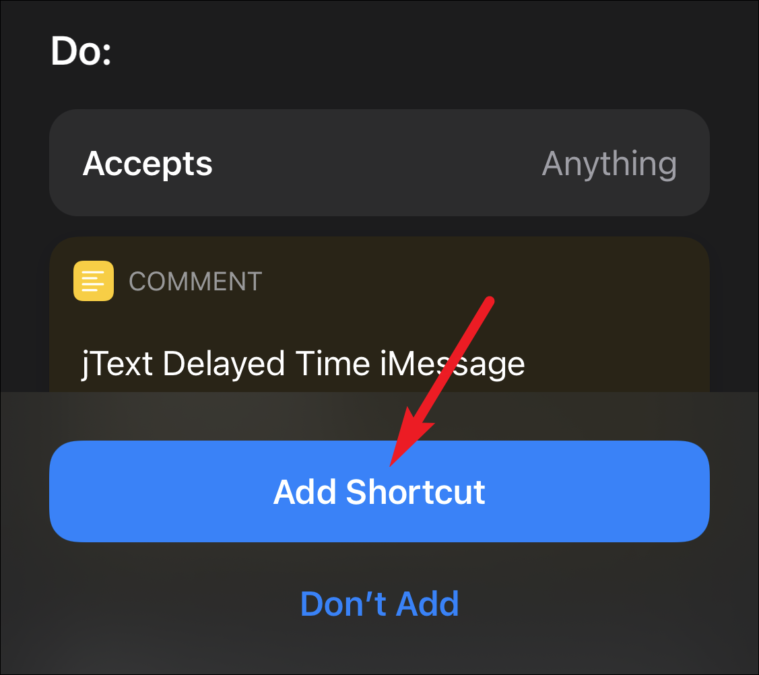
Scheduling a Message
The shortcut will appear in the app with the rest of the shortcuts. Tap it to run it. You can also ask Siri to run the shortcut for you by saying, “Hey Siri, Delayed Time iMessage.”
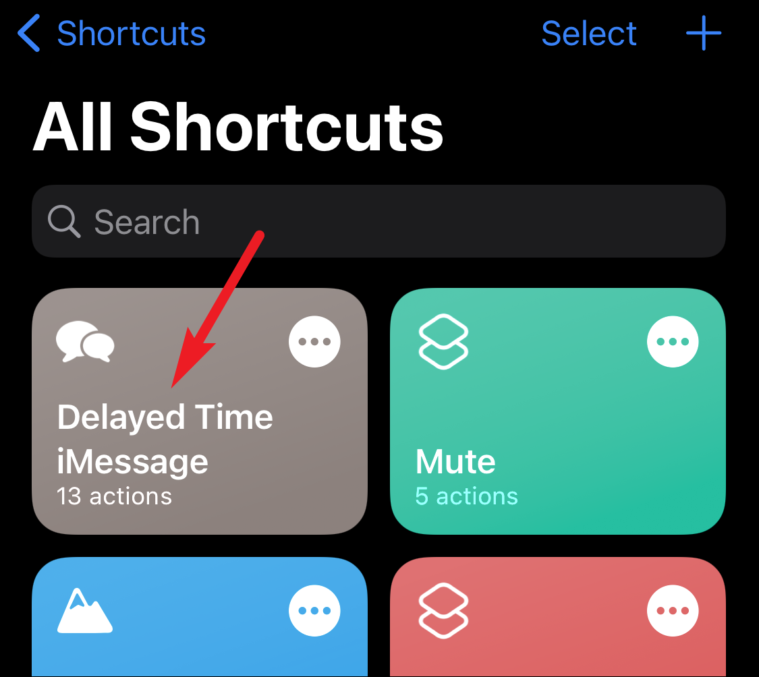
The shortcut will start running. You can only schedule messages to phone numbers with this shortcut at this point and not email addresses. Tap ‘OK’ to proceed. Your contacts will open. Select the contact you want to send the message to.
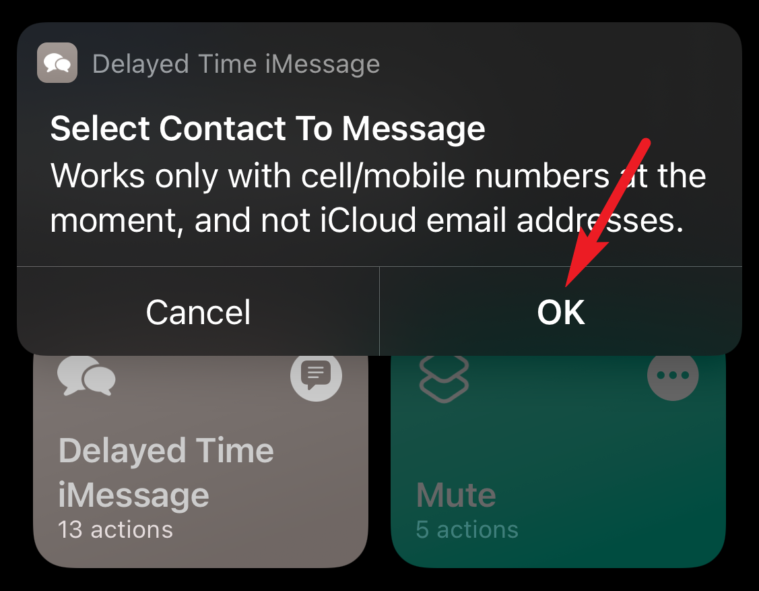
In the next step, enter the message text you want to schedule and tap ‘Done’.
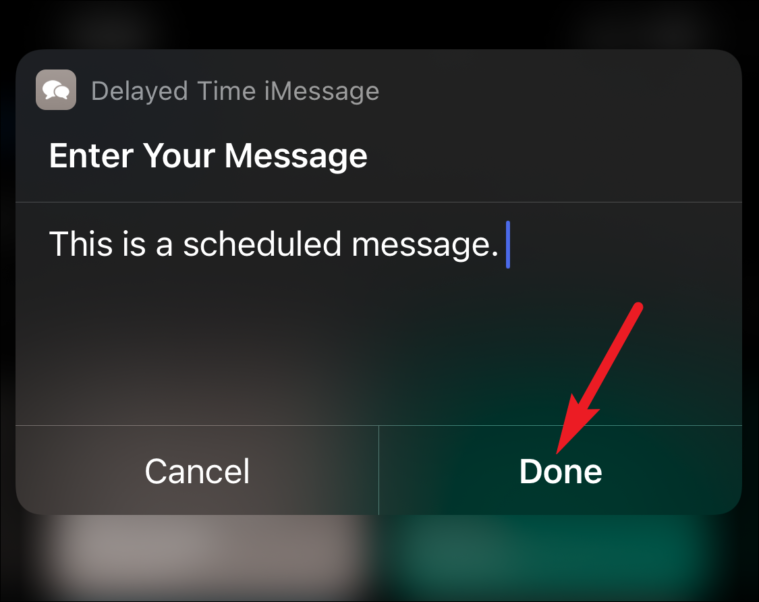
When running the Shortcut for the first time, you’ll also have to give some permissions. The shortcut will ask your permission to copy to the clipboard. If you tap ‘Allow once’, you’d have to approve this part the next time, too, when you run the shortcut. Tap ‘Always Allow’ if you don’t have a problem with the shortcut using your clipboard. If you tap ‘Don’t Allow’, the shortcut will stop running.
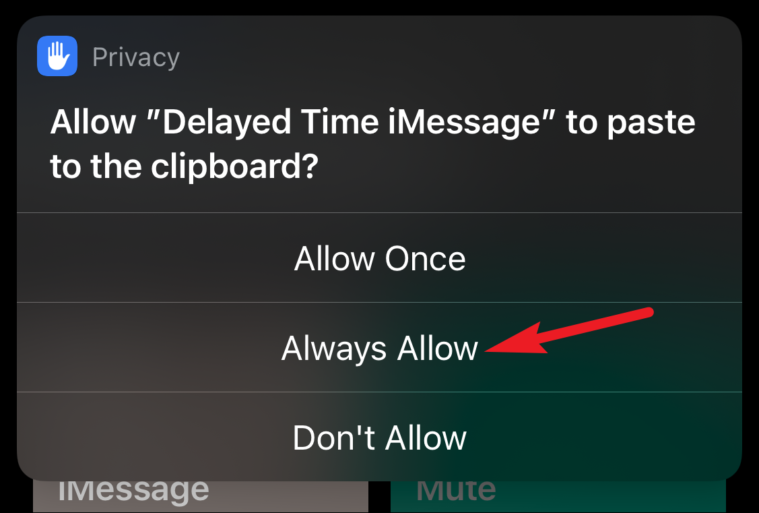
Next, choose the date and time you want to schedule the text for and tap ‘Done’.

And that’s it. The shortcut will run according to schedule. Shortcuts app doesn’t need to be running in the background for the shortcut to run.
The first time the shortcut runs at the scheduled time, a permission banner will appear on your screen. If you tap ‘Always Allow’, the shortcut will run from this point forward without having to ask for your permission and send the message automatically. Choosing ‘Allow Once’ will bring up the choice again next time you use the shortcut to schedule a message. If you tap ‘Don’t Allow’ or swipe away the banner, the shortcut won’t run.
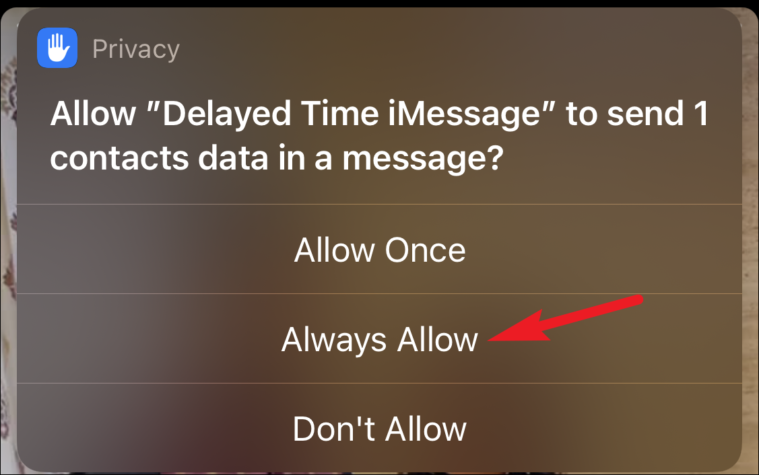
Note: Even if you choose ‘Always Allow’ when the permission prompt appears, your phone needs to be unlocked every time you want to run the shortcut in the future. It won’t ask for your permission and run automatically, as long as your phone is in the unlock state.
It may not be the most elegant method to schedule your texts, but it is better than nothing, especially when you need to schedule some critical texts to be on the safe side.

